There’s probably no telling whether taekkyeon, in which practitioners conduct smooth and slow movements with their limbs, is a dance or a martial art.
One could say, however, that it is a form of martial art in which the practitioner uses the momentum of his opponent to knock him down. The traditional martial art became the first martial art in the world to be added to UNESCO’s list of intangible cultural heritage items back in 2011.
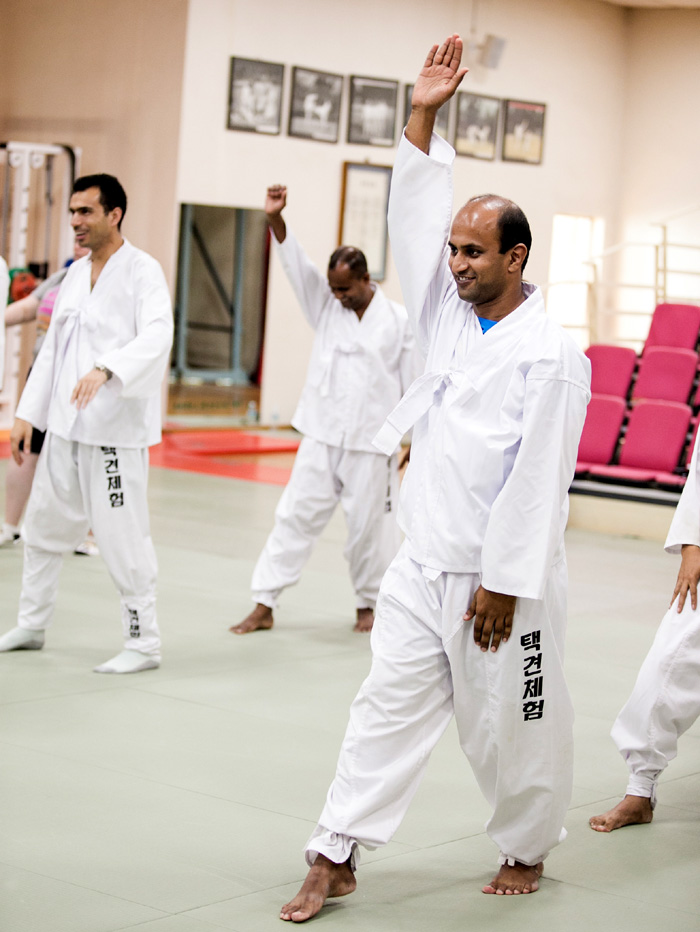
The Korean Culture and Information Service (KOCIS), part of the Ministry of Culture, Sports and Tourism and publisher of Korea.net, recently selected a group of non-Korean residents living in our community and invited them to practice the martial art's basic techniques at the Taekkyeon Education Center, in Chungju, Chungcheongbuk-do (North Chungcheong Province). The August 30 program is part of KOCIS’ year-long “Exploring UNESCO World Heritage in Korea” project.
Under the title, “Gentle in appearance, but strong in spirit with circular movements,” the invitational taekkyeon program gave participants the rare chance to study the gentle, but strong, taekkyeon techniques.
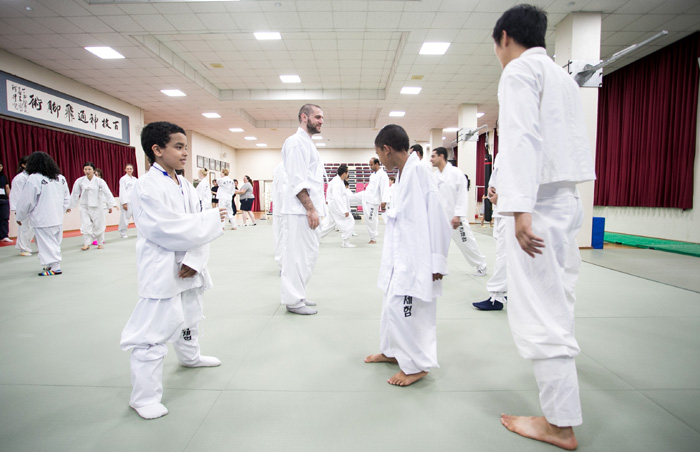
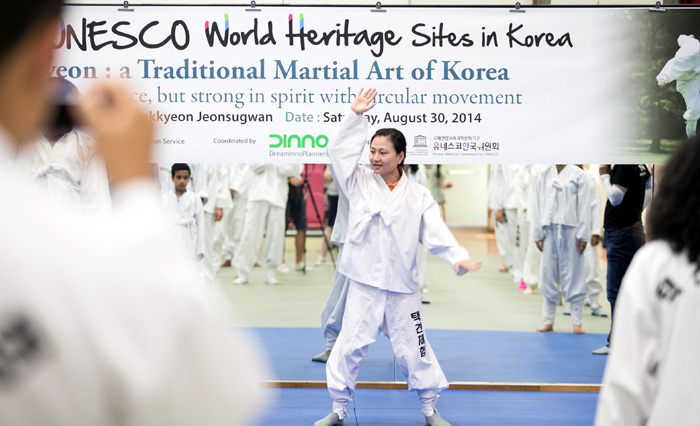
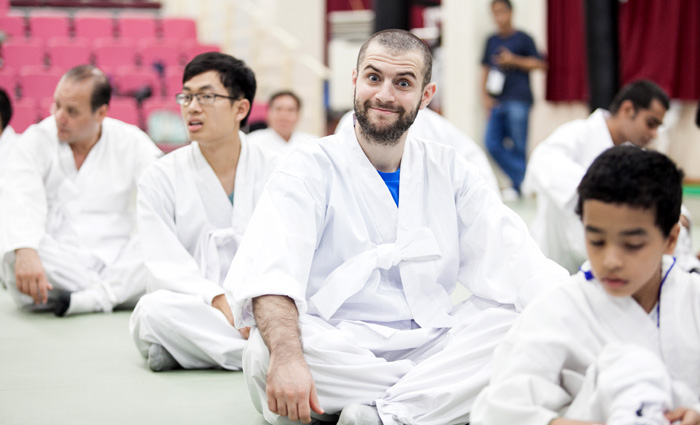
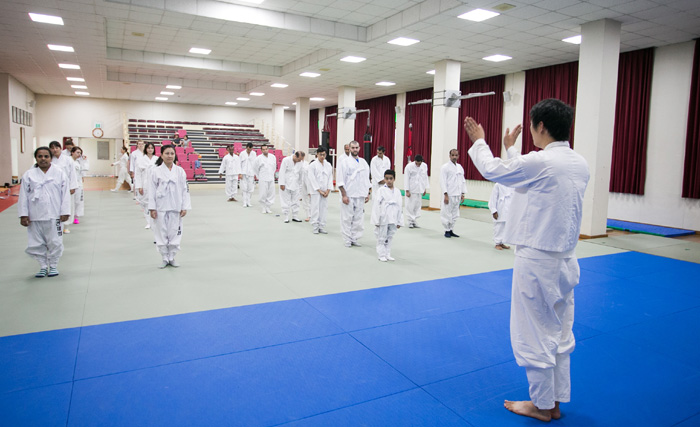
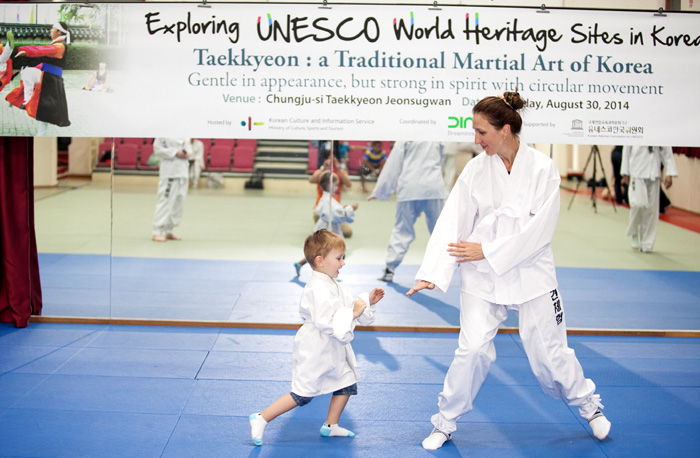
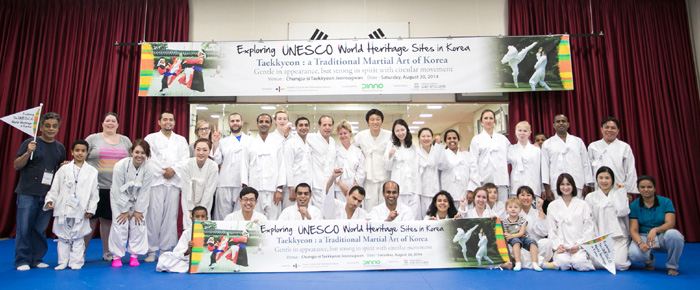
Approximately 40 participants from 25 countries, including personnel at foreign diplomatic offices stationed in Korea, employees of international firms and some educators, listened to a lecture given by taekkyeon master Jeong Kyeong-hwa. His lecture centered on the origin and traditions of the martial art.
The group was then led to a gymnasium where they put all the skills they just learned into action, practicing the moves firsthand.
The year-round “Exploring UNESCO World Heritage in Korea” program aims to bring non-Korean residents of our community to heritage sites across the country. It started in late-May with a program that focused on the Gangneung Danoje Festival held in Gangwon-do (Gangwon Province). In mid-November there will be an exploration of kimjang, the drawn out process of making and sharing kimchi, and there will be a total of eight programs throughout the year.
For those who are interested in learning more about KOCIS' upcoming programs, please visit the website below.
http://www.heritageinkorea.kr/main.do
By Wi Tack-whan, Sohn JiAe
Korea.net Staff Writers
whan23@korea.kr
One could say, however, that it is a form of martial art in which the practitioner uses the momentum of his opponent to knock him down. The traditional martial art became the first martial art in the world to be added to UNESCO’s list of intangible cultural heritage items back in 2011.

A group of taekkyeon practitioners from 25 countries study the traditional martial art on August 30.
The Korean Culture and Information Service (KOCIS), part of the Ministry of Culture, Sports and Tourism and publisher of Korea.net, recently selected a group of non-Korean residents living in our community and invited them to practice the martial art's basic techniques at the Taekkyeon Education Center, in Chungju, Chungcheongbuk-do (North Chungcheong Province). The August 30 program is part of KOCIS’ year-long “Exploring UNESCO World Heritage in Korea” project.
Under the title, “Gentle in appearance, but strong in spirit with circular movements,” the invitational taekkyeon program gave participants the rare chance to study the gentle, but strong, taekkyeon techniques.






Participants practice taekkyeon, a traditional martial art listed in 2011 as a UNESCO intangible cultural heritage item, at the Taekkyeon Education Center in Chungju, Chungcheongbuk-do, on August 30.
Approximately 40 participants from 25 countries, including personnel at foreign diplomatic offices stationed in Korea, employees of international firms and some educators, listened to a lecture given by taekkyeon master Jeong Kyeong-hwa. His lecture centered on the origin and traditions of the martial art.
The group was then led to a gymnasium where they put all the skills they just learned into action, practicing the moves firsthand.
The year-round “Exploring UNESCO World Heritage in Korea” program aims to bring non-Korean residents of our community to heritage sites across the country. It started in late-May with a program that focused on the Gangneung Danoje Festival held in Gangwon-do (Gangwon Province). In mid-November there will be an exploration of kimjang, the drawn out process of making and sharing kimchi, and there will be a total of eight programs throughout the year.
For those who are interested in learning more about KOCIS' upcoming programs, please visit the website below.
http://www.heritageinkorea.kr/main.do
By Wi Tack-whan, Sohn JiAe
Korea.net Staff Writers
whan23@korea.kr